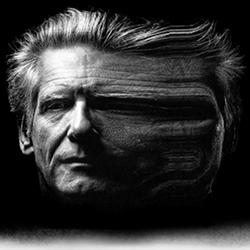
Review: The Wicker Man (1973) - Now On Blu-Ray - NP Approved
Cast: Edward Woodward, Christopher Lee, Diane Cilento
Director: Robin Hardy
Country: UK
Genre: Horror | Mystery | Thriller
Official Trailer: Here
Editor’s Note: The Wicker Man: The Final Cut is now available on Blu-ray and DVD. Special Features include: Burnt Offering: The Cult of The Wicker Man, Worshiping The Wicker Man, The Music of The Wicker Man, and Interview with Robin Hardy.
Now a much loved piece of cult horror cinema, the British tale of folklore gone wrong wasn’t always appreciated for what it’s now seen as. It was originally condemned by censors and saw an incredible amount of editing room cuts to get it as far as the big screen. Cut down from a 99 minutes run time to 87 minutes, the feature served an initial purpose on first theatrical release. When it made it that far it was only awarded projected glory as part of a double bill. The Wicker Man was slotted in alongside Roeg’s masterful Don’t Look Now in 1973 as a B-feature. The British Board of Film Classification gave it the highest age rating of the time due to the inclusion of ‘sex, nudity, occult themes and horror’. For these reasons it was denounced as bawdy and dismissed as a hack job of a horror film.
Now a much loved piece of cult horror cinema, the British tale of folklore gone wrong wasn’t always appreciated for what it’s now seen as. It was originally condemned by censors and saw an incredible amount of editing room cuts to get it as far as the big screen.
The critical reception of the film was largely confused with critics unsure where to place this completely bizarre narrative that embraced cultish sub-cultures, tampered with religion and profiled British folk song. Overwhelming bleak, the narrative is certainly a spin tingling selection of the familiar and mundane mixed with the thrill of the chase and fear of being overpowered by manic and strange ideologies. All of these are now revered as wondrous and complex. How time and evaluation of a film change has a lot to do with the initial setting of how the film is watched. As part of a double bill it must have been a mental strain to deduce value from, especially when Don’t Look Now was such a work of beauty and involved comparatively simplistic style elements.
 Set on a remote island landscape somewhere off the British mainland, the backdrop to The Wicker Man is colloquial and powerful. The sense of remoteness is frequently highlighted through the barren shots of cliff edges and stone ruins. A society that the so believed modern lifestyle of the protagonist police sergeant Neil Howie has long since fobbed off as just disassociated rather than threatening. Island life seems idyllic and peaceful when our sergeant arrives to investigate the disappearance of a young girl. Welcomed by the locals and encouraged to explore their seemingly outdated cultural pastimes. In a flourish of colourful traditions and music, he is transported to a different mental place. The further into the islands cultural interests and history he delves the more he’s cornered into seeing things not as they are, but as they might be secretly intended. In a unforgettable performance from Edward Woodward as the sergeant, the mental goings on of the island are hallucinatory at best and terrifying at worst. The narrative allows a division of understandings as the audience are mostly in on the hints and clues of a more sinister nature that the sergeant is initially either missing or ignoring in disbelief.
Set on a remote island landscape somewhere off the British mainland, the backdrop to The Wicker Man is colloquial and powerful. The sense of remoteness is frequently highlighted through the barren shots of cliff edges and stone ruins. A society that the so believed modern lifestyle of the protagonist police sergeant Neil Howie has long since fobbed off as just disassociated rather than threatening. Island life seems idyllic and peaceful when our sergeant arrives to investigate the disappearance of a young girl. Welcomed by the locals and encouraged to explore their seemingly outdated cultural pastimes. In a flourish of colourful traditions and music, he is transported to a different mental place. The further into the islands cultural interests and history he delves the more he’s cornered into seeing things not as they are, but as they might be secretly intended. In a unforgettable performance from Edward Woodward as the sergeant, the mental goings on of the island are hallucinatory at best and terrifying at worst. The narrative allows a division of understandings as the audience are mostly in on the hints and clues of a more sinister nature that the sergeant is initially either missing or ignoring in disbelief.
There are a few stunningly memorable sequences throughout the film that have helped it become the iconic piece it now is within British cinema history.
There are a few stunningly memorable sequences throughout the film that have helped it become the iconic piece it now is within British cinema history. In a dance sequence with a beautiful girl, alluring primal instincts and threatening the sergeants Christian faith attitudes, there is witnessed the true scope of the film. What can be seen as dangerous or risqué for 1970s British film industry is now hailed as a marvel of genius that demonstrates something distinctly personable about British films ability to convey lasting imagery. The final sequence is hard to tie down as a start to finish scene, but holds dear to my affections as a moment of cinema that is truly weird and ultimately thrilling. Featuring bizarre costumes and things that seem perfectly reasonable for historical recreations, the investment in the visual content of the final few minutes is iconic. Hugely memorable and out loud expression inducing still to this day, the penultimate legacy of The Wicker Man is surely something beyond comprehension of the director Robin Hardy.
It stands the test of time now as a classic feature in its own right. The recent restoration and distribution of what has been entitled The Final Cut has attributed a revival and re-evaluation of the films content and contexts. Available for the first time on BLU Ray this is probably the best time to take the opportunity to acquaint with the many layers of narrative webbing. Underlying meanings that have strung out by film theorists and historians are ample in their diverse and fascinating approaches. Most of these are easily accessible thanks to online search engines and the beautiful online databases of film institutes globally. The BLU Ray has a wealth of extras that can perfectly illustrate and attempt to deconstruct the mystical oddity that is The Wicker Man.
Related Posts
![]()
Laura Shearer
![]()
Latest posts by Laura Shearer (see all)

























